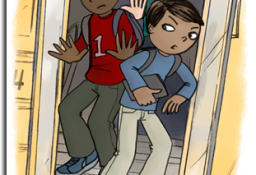I have worked one-on-one with over 3000 individuals during the past 15 years.. And each one has their own story with unique elements. However, there are common themes too.
For example, many people end up in a misfit or in career pain because they get on the wrong bus. They realize the bus is headed somewhere they don’t want to go. The journey they are taking is not one they would have chosen if, when they got on the bus, they knew where they wanted to go.
Here are 5 kinds of bus rides I often see. Perhaps you’re riding one of these buses right now:
1. You hopped on the first bus that came along. You needed a job early in life to pay the bills, to establish independence, to get you started in life but you never got off. Now, you feel stuck. Your career has hit the glass ceiling. There is nowhere else to go with this job, this company, this profession. Or, you’re struggling with work-life balance, struggling with childcare or eldercare. Or, you feel constant pressure to upgrade your skills. Or, you are suffering burnout. Perhaps it’s time to get off the bus and find your own set of wheels before the bus crashes!
2. You followed the herd. Everyone in your family was taking this bus—military, business, medicine, teaching—so you jumped on board. Or, maybe your high school friends all went off to university, so you tagged along. Or, jobs opened up in a booming oil sector, or IT, or construction, so you stepped into this space because that’s where the jobs were. You took this bus because everyone else was doing it and you had no clear idea of what else to do. Now you’re tired of playing follow the leader. You want to find your own road, perhaps a road less traveled. You’re ready to explore other routes, or find a safe exit.
3. You bought a ticket in order to buy a job. This bus is going to Vegas. You’re on the road to riches. Your job sucks the life out of you but it pays a lot of money. But high-paying drudgery is still drudgery. Someday you’ll quit and get a job with meaning, with purpose, one that inspires and energizes you. Why not start now?
4. The bus you first took was the right one when you started out in your career. You learned certain skills, grew professionally and personally, paid off some debts and acquired some assets. You ponder the gap between your youthful ideals and your current realities. You wonder why you never transferred to another bus. So now you find yourself looking out the window and daydreaming . . . where do all those other roads go? What lies beyond those hills? It’s okay to dream again, to explore new options. Stay with the daydream…see where it takes you.
5. You’re up and out of your seat, time to get off the bus. Stop this thing and let me off! You live for the weekends and only come alive during a long vacation. You’re past the stimulation of the learning phase, you’ve mastered the ins and outs of the job, you have a financial cushion. Now you’re bored – painfully bored, and you watch the clock like a timekeeper at a sporting event. You’re ready to build your own business, ready to serve others, ready to find a more interesting job, ready to take the wheel and started driving your own dreams.
Life is way too short to spend riding around in circles on a bus going nowhere. What is needed is some clarity about WHERE to work and WHAT to do in terms of a job. Getting answers to these questions gives some direction on what to do next.
If you’re ready to make a plan to doing work you love in a very real way then start focusing on those times in your life when you were doing what you enjoyed most, when you got lost in it when you were truly absorbed by it, when an intensity came over you.
Then bring those events or activities to a session with me for analysis to see how they connect in very practical and real ways to answering WHERE and WHAT do I do next?

